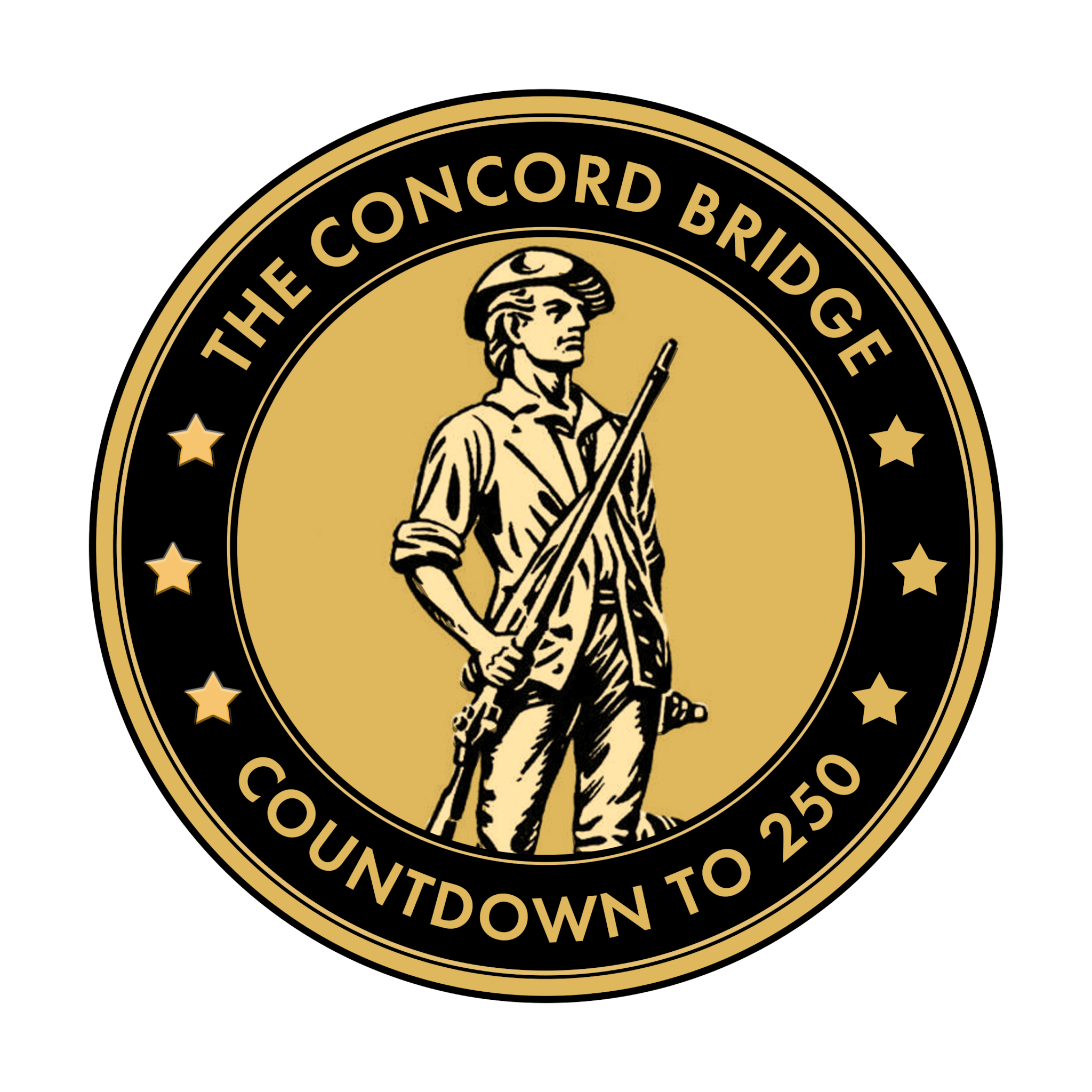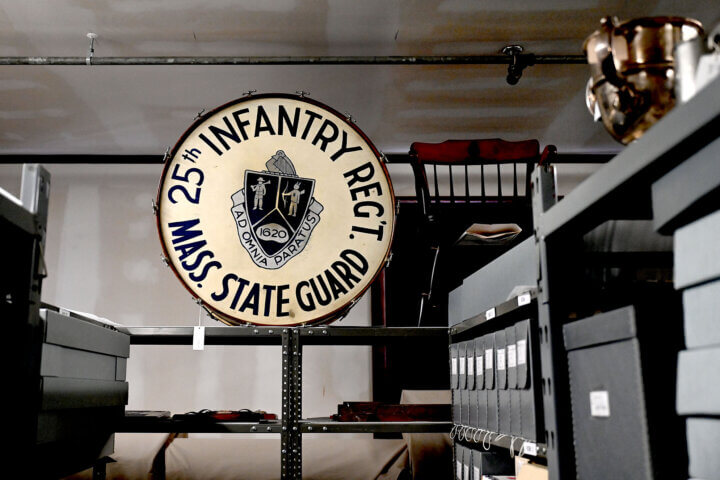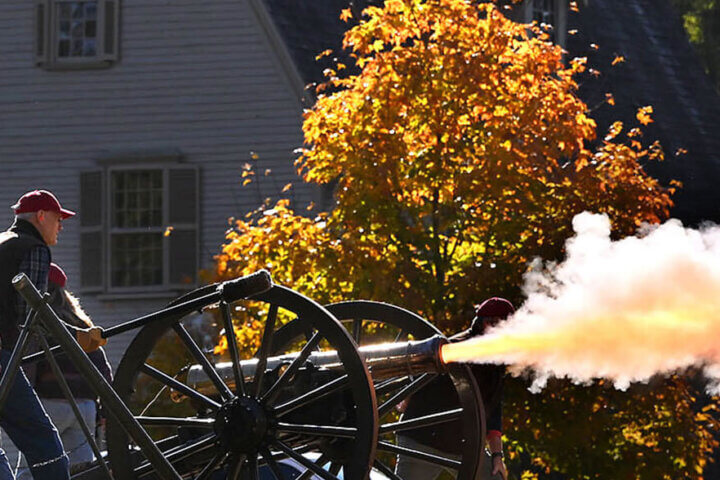By Laurie O’Neill — Correspondent
Just think.
You’re setting the breakfast table and all hell breaks loose outside.
Church bells begin pealing, drumbeats sound in the distance, and you can hear the clip-clop of horses’ hooves.
Militiamen rush by, bearing muskets, cartridge boxes, canteens, and bayonets.
Alarms are being raised across the countryside. The town has gotten word that the Regulars are coming. They want to seize military supplies stored in town.
Food cools on the table as your husband rushes out to join his militia and you stay hidden inside, peering out behind the curtains at the chaos that will soon lead to a deadly clash and a seminal moment in American history.
Most people aren’t aware that some of the Concord antique houses they may pass each day were witnesses to the first battle of the Revolutionary War.
A Concord250 project
These houses are now being honored with a flag they can display that recognizes their importance then — and now. It is a project of a subcommittee of the Community Participation Committee for Concord250.
The list of homes now includes 51 1775 Houses and 24 Witness Houses. It was provided by Anne Clifford, Concord’s senior planner, and comes from the Battle Ground Scenic Byway Corridor Management Plan of 2021. Created by a professional team, including the Planning Commission and Minute Man National Historical Park, the list does not include the structures in the park owned by the NPS.
The flags were designed by subcommittee spokesperson Faye Allen, with input from an Acton printer, John MacKinnen, and Holly Cratsley, chair of the Participation Committee.
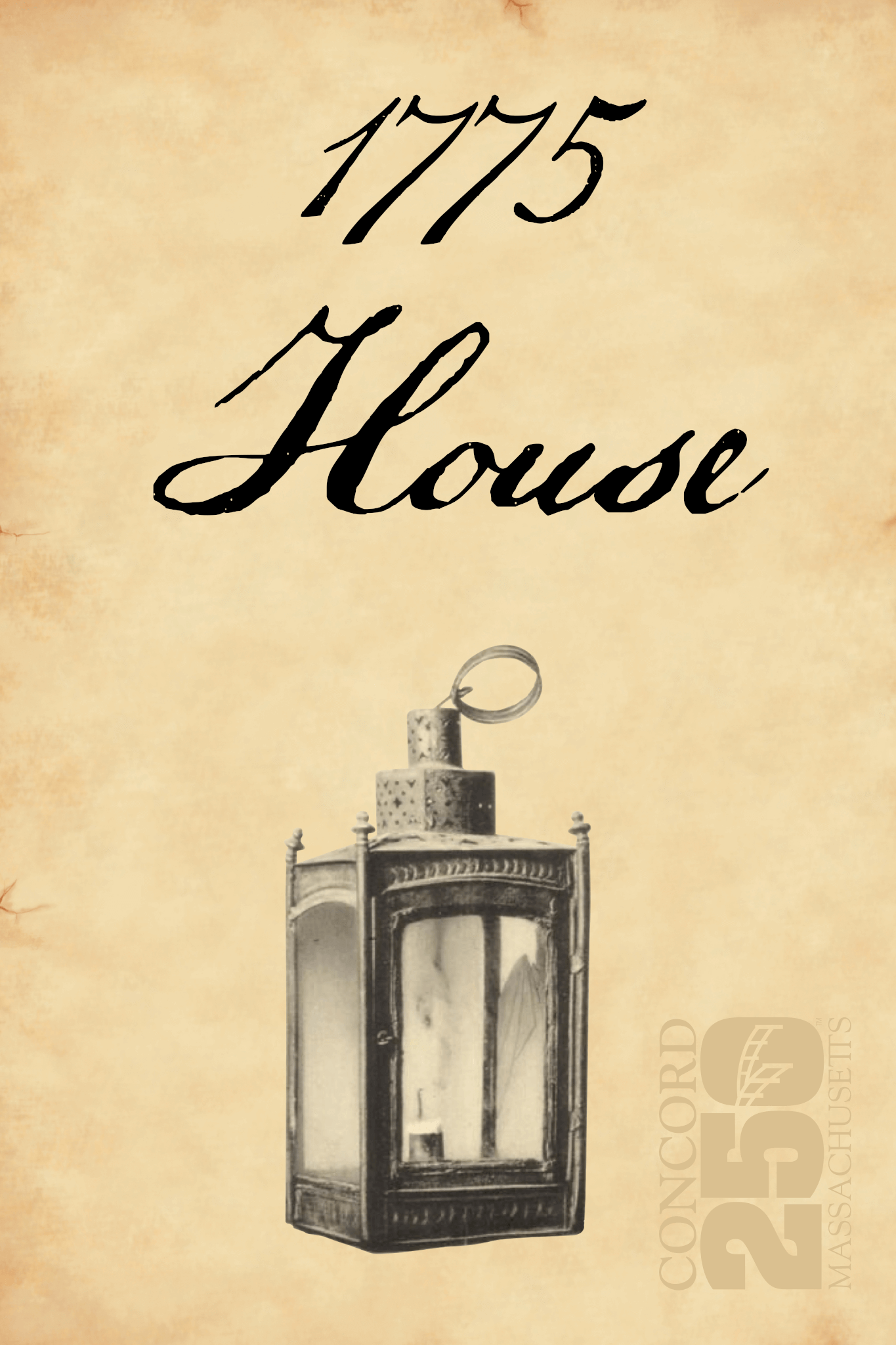
Ten homes displayed the flags on Patriots Day. Dozens more will receive flags to put in front of homes next spring for the 250th anniversary of the Revolution.
The Witness House flag carries the image of the lantern now in the Concord Museum collection — one of two that hung as a signal in the belfry of the Old North Church in Boston on the night of April 18, 1775.
The other flag, for 1775 Houses, depicts the Minute Man statue.
Owners of these homes not only serve as their stewards, but they are also proud to be a part of their history. And they are eager to share the structures’ stories.
House is a ‘labor of love’
Though the renovation of his Main Street house was extensive and painful, having been conducted during the pandemic when there were shortages of materials and difficulties finding craftsmen, it was a “labor of love,” says Mark Carbeau, who owns a historic home with his wife, Cheryl.
A wooden two-holer was in the home’s only bathroom when the Carbeaus and their three children took ownership in 2021.
Carbeau works with CWH Advisors as an advisor to MedTech companies and Cheryl is a real estate transaction manager for Coldwell Banker but a skilled carpenter who did some of the restoration work.
Built in 1767 for Captain Samuel Jones, the house was originally across the street at 252 Main, where the original iron gates still stand, opposite Henry David Thoreau’s family home and pencil shop. It was a stop on the Underground Railroad.
The house was later rolled on logs and pulled by oxen to its current location across the street, two blocks west.

An example of Georgian vernacular style, the house features formal symmetry, detailed dental moldings, and sloped “capitals” above window pediments that emulate the shape of a crown. The details were intended as a gesture of loyalty to the king, says Carbeau, though interestingly, Jones was a keen proponent of independence.
The house was sold to American poet William Ellery Channing in 1849, a friend of Ralph Waldo Emerson, Henry David Thoreau, and Franklin Sanborn. He is said to have introduced Thoreau to Emerson in the library there.
“We’re honored to display our flag and share in the significance of Concord’s historic role,” says Carbeau, who adds that he often gets “goosebumpy” when walking through the home.
Riding 100 miles to warn townspeople
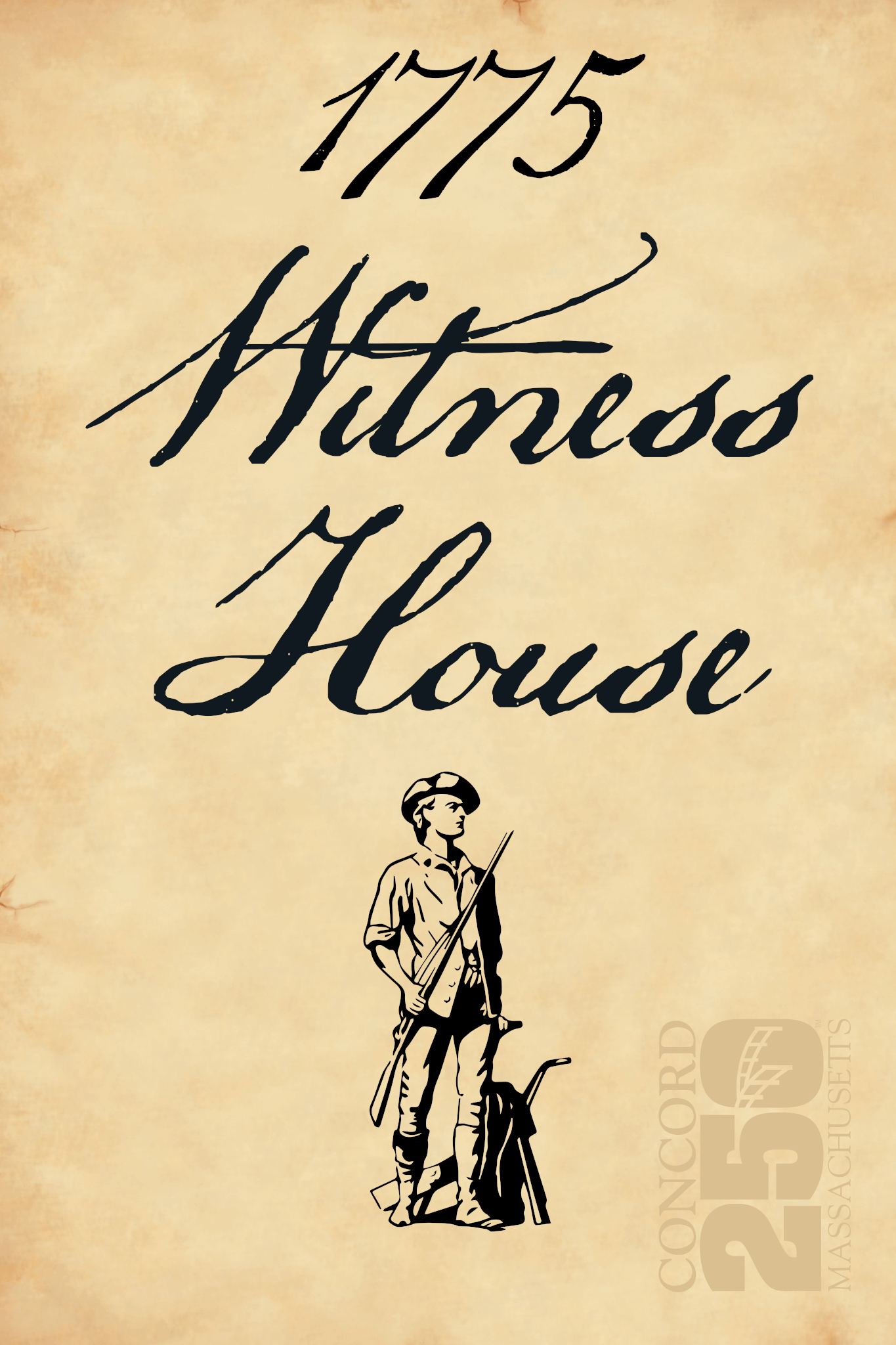
Ryan and Kathryn Hanley own a house on Lexington Road that was partly built in 1667, possibly by the landowner, Peter Bulkeley, Esq, grandson of the town’s founder, Hanley says.
The homeowner in 1773 was a saddler, Reuben Brown, who was sent to Lexington on April 19, 1775, and witnessed the firing of shots on the Green there. He reported back to Concord and is said to have ridden 100 miles warning other towns.
The Regulars looted the house and set it on fire, possibly accidentally, says Hanley, who is a professor at Boston College specializing in 17th and 18th-century political philosophy, a former member of the Concord Historical Commission, and the current chair of the Concord Museum Board of Trustees.
The house has a rich and detailed history, including having displayed Revolutionary-era items and prompting the Concord Antiquarian Society to establish the Concord Museum.
“We’re delighted to display the Witness Flag,” says Hanley. “We think it’s wonderful that Concord is recognizing these remarkable structures [that] we all walk and drive by every day.”
READ MORE OF THE CONCORD BRIDGE’S COUNTDOWN TO 250 COVERAGE
Protected forever
October Farm’s typical Georgian period central chimney farmhouse is painted a historic yellow and dates to 1774. Its owners, Reiner and Nancy Beeuwkes, have deep New England roots.
Beeuwkes is a scientist, biomedical pharmacy entrepreneur, and philanthropist. Nancy is a retired psychiatric nurse who was once a pilot. She is a former School Committee member and former president of the Concord-Carlisle League of Women Voters.
Aware of its rich and long history, the couple bought the house in 1992 after raising their family elsewhere and found it had been lovingly maintained by its previous owners, who added to it but left the old portion nearly intact.
The farm is so named by its most famous owner, renowned Harvard ornithologist and first president of the Mass Audubon Society, William Brewster, who studied the wildlife on the property. It is ringed by gardens, including 4,000 daffodils, and bird feeders are everywhere, “decorated with goldfinches,” Beeuwkes says.
After the family moved there, Beeuwkes discovered he is a direct descendant of Peter Bulkeley.
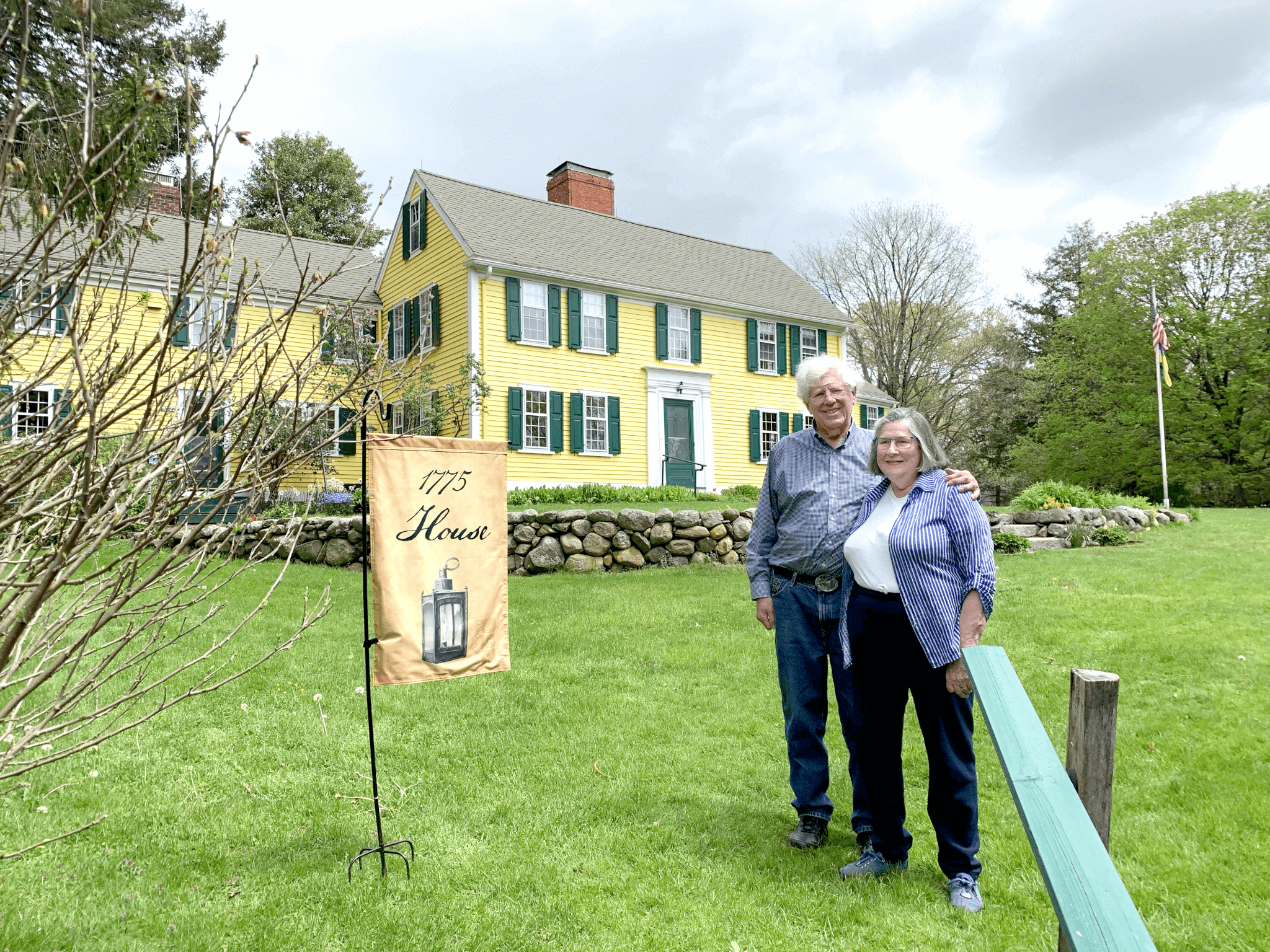
Though once comprising more than 300 acres, the property now spans 12 acres, with a stable and tenants’ cottage and a garage that was a cow barn in the 1870s. Part of the land remains in agricultural use, for boarding and training horses.
A few years ago the town and Concord Land Conservation acquired 80 acres of the original farm and provided public access. The couple then bought another 130 acres and donated them and the 12 acres they owned to Mass Audubon. They created a life estate so that the historic house will also be fully owned and protected by Mass Audubon.
“We’ve helped preserve the house, and that matters to us a whole lot,” declares Beeuwkes. “We are just the stewards, but we feel we belong here, and it gives us a great deal of happiness.”

Other structures designated as 1775 Houses or Witness Houses, says Allen, include one owned by Bob and Anne Drapeau on Lowell Road, which dates to 1725. William and Wendy Page own a c. 1750 Lowell Road home. Also on Lowell Road is a 1725 home, the Jacob Brown House, owned by Robert and Anne Drapeau.
Allen says the Colonial Inn has Witness House status because it served as a secret military storehouse and a makeshift field hospital for injured Minute Men. The Wright Tavern earned its designation because both the Minute Men and the Regulars used it at different times on that fateful day in 1775.
Local historical organizations strongly support the project.
“The Witness Houses in the districts are the cornerstones of Concord and are sacred to Concordians,” says Dennis Fiori, a member of the Historic District Commission and a former director of the Concord Museum.
“We are privileged to know that their owners treasure their homes and are good stewards.”



